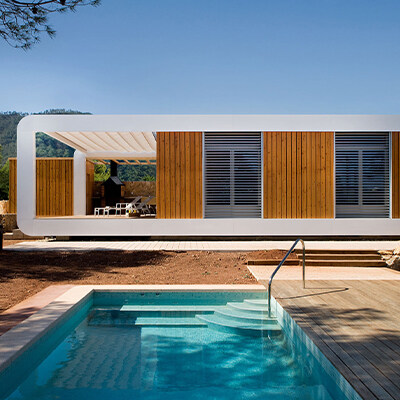Email format error
Email cannot be empty
Email already exists
6-20 characters(letters plus numbers only)
The password is inconsistent
Email format error
Email cannot be empty
Email does not exist
6-20 characters(letters plus numbers only)
The password is inconsistent


Luxury container homes have emerged as a compelling alternative in the housing market, offering innovation, sustainability, and unique design opportunities. However, for prospective homeowners, understanding the intricacies of cost, market trends, and regulatory considerations is paramount. In this comprehensive guide, we delve into these key aspects to provide insights into the world of luxury container homes.
When considering luxury container homes, the initial investment often raises questions. How does it compare to traditional housing options, and what are the long-term financial implications?
Luxury container homes typically require a significant initial investment, but they offer potential savings in the long run. Compared to traditional homes, the upfront costs may vary depending on factors such as customization, location, and design complexity. However, the investment in a luxury container home can yield substantial returns over time, thanks to lower maintenance costs, energy efficiency, and potential resale value.
Customization plays a significant role in cost considerations. While customization allows homeowners to tailor their living spaces to their preferences, it also adds to the overall expense. Factors such as interior finishes, smart home technology, and eco-friendly features contribute to the customization costs. Despite this, many homeowners view customization as an investment in creating their dream living environment.
Long-term savings are a compelling aspect of luxury container homes. Their energy-efficient design, use of sustainable materials, and reduced maintenance requirements can lead to significant cost savings compared to traditional housing options. By embracing eco-friendly practices and innovative design, luxury container homes offer not only financial benefits but also a more sustainable lifestyle.

The luxury container home industry is experiencing rapid growth, driven by evolving consumer preferences, technological advancements, and design innovations. Understanding current market trends and future projections is essential for both industry professionals and prospective homeowners.
The current market trends in the luxury container home industry reflect a growing demand for sustainable, customizable housing solutions. Consumers are increasingly drawn to the versatility, affordability, and eco-friendliness of container homes. Design trends focus on maximizing space, integrating smart home technology, and incorporating sustainable features such as solar panels and rainwater harvesting systems.
Technological advancements continue to reshape the luxury container home landscape. From innovative building materials to advanced construction techniques, technology plays a crucial role in enhancing both the aesthetic appeal and functionality of container homes. As technology evolves, we can expect further improvements in energy efficiency, off-grid capabilities, and design flexibility.
Looking ahead, the future of luxury container homes appears promising. Market projections suggest continued growth fueled by increasing urbanization, environmental awareness, and demand for affordable housing. However, challenges such as regulatory hurdles and zoning restrictions may pose obstacles to widespread adoption. By staying abreast of market trends and embracing innovation, the luxury container home industry is poised for sustained success.
Navigating the regulatory landscape is a critical aspect of building luxury container homes. From building codes to zoning laws, understanding the legal requirements and potential challenges is essential for a successful project.
Local regulations vary widely, impacting the feasibility and cost of luxury container home construction. Building codes dictate structural standards, safety requirements, and permitting procedures. Compliance with these codes ensures the structural integrity and safety of container homes but may also add complexity and expense to the construction process.
Zoning laws govern land use and development, dictating where and how container homes can be built. Restrictions on residential zoning, minimum lot sizes, and aesthetic considerations may limit the feasibility of container home projects in certain areas. Overcoming these zoning challenges requires careful planning, community engagement, and potentially seeking variances or exemptions.
In conclusion, luxury container homes offer a compelling blend of innovation, sustainability, and customization. By understanding the cost factors, market trends, and regulatory considerations, prospective homeowners can make informed decisions and embark on their journey towards a unique and sustainable living experience. As the luxury container home industry continues to evolve, embracing innovation and collaboration will be key to unlocking its full potential.